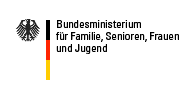Data sources
Data sources
Official statistics: Official statistics are an important source of data. Using these statistics, collected officially as prescribed by law, social developments can be measured and depicted over a long period of time. Examples include social security statistics, micro-census and random sample income and consumer surveys. As a rule, official statistics, to the extent that they relate to persons, are already carried out in a way that is differentiated in terms of gender, which means that they can be evaluated in terms of orientation to gender equality. The Federal Statistical Office Germany has produced a comprehensive list of all statistics that are differentiated in terms of gender, and this can be obtained there upon request.
Depending on whether data are needed for information purposes or are used as the basis for political decisions or research work, different forms of preparation are needed. The possibilities for statistical offers therefore extend from annotated summaries of collection findings to structured reports and tables to complete sets of data. But evaluation taking social gender into account in the form of gender data frequently does not take place. If this has not yet been done, data may be prepared or made available by special request, if necessary subject to a charge. Such requests to the Federal Statistical Office should therefore be as specific and gender equality-oriented as possible. Here you can find information on evaluating the quality of data.
Data differentiated in terms of gender are not yet collected in some areas. In the context of modernizing official statistics as part of public infrastructure, the Statistical Advisory Council has proposed in its recommendation to the German Government [German text] that gaps in information in relation to Gender Mainstreaming should be closed in the 14th and 15th legislative periods. It is recommended, for instance, that in the context of a systematic build-up of statistics on the Information Society a check should be made as to whether there are still gaps in information in this area with regard to the equal treatment of women and men. You can support the process of adapting official statistics to the implementation of GM as a cross-sectional task in all areas of policy by drawing attention to existing gaps in data that you find in the course of your specialist work.
Depending on whether data are needed for information purposes or are used as the basis for political decisions or research work, different forms of preparation are needed. The possibilities for statistical offers therefore extend from annotated summaries of collection findings to structured reports and tables to complete sets of data. But evaluation taking social gender into account in the form of gender data frequently does not take place. If this has not yet been done, data may be prepared or made available by special request, if necessary subject to a charge. Such requests to the Federal Statistical Office should therefore be as specific and gender equality-oriented as possible. Here you can find information on evaluating the quality of data.
Data differentiated in terms of gender are not yet collected in some areas. In the context of modernizing official statistics as part of public infrastructure, the Statistical Advisory Council has proposed in its recommendation to the German Government [German text] that gaps in information in relation to Gender Mainstreaming should be closed in the 14th and 15th legislative periods. It is recommended, for instance, that in the context of a systematic build-up of statistics on the Information Society a check should be made as to whether there are still gaps in information in this area with regard to the equal treatment of women and men. You can support the process of adapting official statistics to the implementation of GM as a cross-sectional task in all areas of policy by drawing attention to existing gaps in data that you find in the course of your specialist work.
Time use surveys: In order to obtain gender data, it may also be necessary to establish new methods of data collection for official statistics. One example is the time use survey. Time use surveys collect qualitative data on how much time women and men spend on average on certain activities. They are usually differentiated by gender and age, but also by other relevant structural criteria. This still relatively young form of statistical data collection makes it possible, for example, to integrate unpaid work into the structuring of national policy (UNECAP: 21) and thus make a contribution to the national economy visible which is still predominantly made by women. There is a current time use survey for the situation in Germany.
Databases: Another source comprises special databases for statistics that are differentiated in terms of gender. These range from international surveys to information within specific subject areas.
erstellt von Administrator
—
zuletzt verändert:
02.01.2010 20:07






